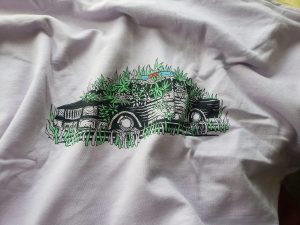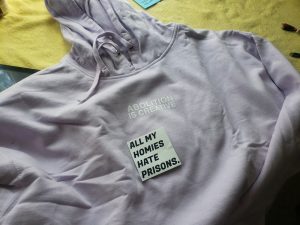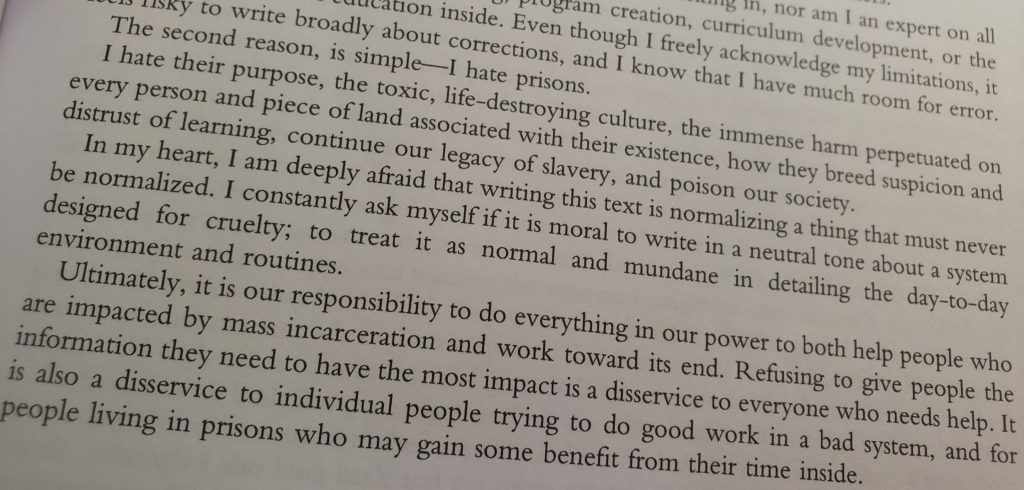I recently ordered a very cool lavendar hoodie from the For Everyone Collective, a group of artists and creatives committed to transformative justice and abolition. I found For Everyone through Abolition X, a podcast co-hosted by Vic Mensa, Indigo Mateo & Richie Reseda, and I found that through Richie’s conversation with Prentis Hemphill on the Finding Our Way podcast. The hoodie is gorgeous, although designed for slightly less plush bodies than mine, and I’m looking forward to wearing it with pride 😊 At this point, you’re probably saying to yourself “Cute story, but how does this all connect to teaching in prison?”


Listening to Richie talk about his experience and abolition and transformative justice reminded me that we can never normalize intentionally causing harm, especially those of us who teach in prisons and other carceral spaces. For the last year, I’ve focused mainly on writing, painting, and figuring out what comes next. The world of prisons, jails, corrections culture, DOCs, and intensive, long-term harm feels far away.
I’m grateful for the time to rest, but there are millions of humans still locked in cages. People are isolated from their families, friends, communities – all the daily bits of life we take for granted. What I don’t want to lose in my excitement about this new phase of life is the root of my work: teaching in prison, educational trauma, and the connection between educational trauma and mass incarceration. Finding Richie was a reconnection to our shared work of abolition, tranformation, and creating a world that reflects our collective imagination and joy.
I was talking with a formerly incarcerated colleague recently and they told me they were a little thrown by the fourth chapter of the book, the chapter about teaching inside. When I asked why, my colleague said the abrupt change in tone reminded them of an actual corrections manual or training. That conversation stayed with me for a long time, and I worried about that observation and what it might mean.
Chapter Four was the hardest chapter to write. It took a while for me to understand why it was so difficult. Ultimately, it became clear that it was a normal response to observing and writing about a system designed for destruction and dehumanization. Working in corrections is a constant mind-fuck. Staying even moderately well requires constant reminders that you aren’t wrong; that it is at least as bad as it seems, ususally worse.
Educators working in or adjacent to corrections will know exactly what I’m talking about – the ceaseless pretense of normality, assimilation into corrections culture, the razor thin line we have to walk to maintain access to humans living in hellholes. I remember going to my therapist one day and falling to the floor, weeping, saying “I feel crazy all the time.” My therapist didn’t entirely understand, but I have never forgotten that moment.
The ultimate battle working in carceral spaces is to remember that we are human and what we are encountering is NOT normal. We can never normalize dehumanization in any form. Chapter Four is so different because there is no “graceful” way to write about working inside, no way to make it softer or prettier or smooth the edges. Teaching in prison is no exception, as higher education programs can easily become an extension of corrections culture.
It should ALWAYS pierce our hearts to read about the spaces we have made specifically to dehumanize and control; to remember the people we have condemned to live in them.
